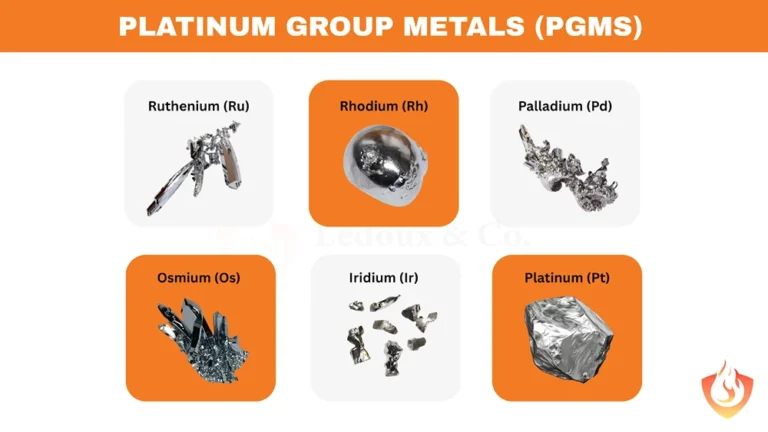Catalysts drive countless chemical processes essential to modern life, from clean fuels to pharmaceuticals. A homogeneous catalyst is one that exists in the same phase as the reactants, usually liquid or gas.
In this article, we explore what homogeneous catalysts are, how they work, their industrial importance, and how Ledoux & Co. supports innovation through catalyst testing and validation.
What Is a Homogeneous Catalyst?
Homogeneous catalysts play a pivotal role in chemical industries and research, offering unmatched precision in reaction control and selectivity.
Definition & Key Features
A homogeneous catalyst operates within the same phase, either liquid or gas, as its reactants. Typically, these catalysts are molecular or ionic species, including soluble metal complexes, organometallic compounds, or acids and bases.

Photo: Unsplash
Despite participating actively in reactions, they are not consumed. Instead, they undergo cyclical regeneration, maintaining efficiency across multiple reaction cycles.
Characteristics and Advantages
Homogeneous catalysts are valued for their high selectivity, enabling them to produce specific products with minimal by-products. They frequently operate under milder temperature and pressure conditions than heterogeneous catalysts, reducing energy demands.
Their well-defined active sites allow scientists to study mechanisms in detail, optimizing metal centers and ligands to control reactivity, stability, and selectivity precisely.
Limitations & Challenges
These advantages come with challenges. Separation and recovery can be complex, as the catalyst shares the same phase as the products. Catalyst stability can also pose issues due to deactivation, ligand degradation, or contamination.
Additionally, some homogeneous catalysts rely on precious metals and intricate ligands, making them cost-intensive. Solvent effects and environmental sensitivity further complicate industrial applications.
How Do Homogeneous Catalysts Work?
Homogeneous catalysis operates through well-defined molecular mechanisms, allowing controlled transformations that are vital in fine chemical and pharmaceutical synthesis.
Basic Mechanism & Modes of Action
The catalytic process generally involves forming intermediate complexes between the catalyst (often a metal-ligand compound) and reactants.
Key steps may include oxidative addition, migratory insertion, protonation/deprotonation, or electron transfer. These steps activate substrates and transform them into desired products.
After each reaction cycle, the catalyst regenerates, ready for reuse. The ligands surrounding the metal center play a critical role, tuning properties like selectivity, activity, and stability.
Real-World Industrial Examples
Homogeneous catalysts underpin numerous industrial processes fundamental to the global economy:
- Oxo (Hydroformylation) Reaction: Converts olefins, carbon monoxide, and hydrogen into aldehydes or alcohols using cobalt or rhodium complexes. This process forms the basis for manufacturing plasticizers, detergents, and solvents.
- Esterification and Dehydration: Acidic homogeneous catalysts, such as sulfuric or p-toluenesulfonic acid, are used to form esters efficiently, critical in fragrances, polymers, and pharmaceuticals.
- Oxidation of Ethylene to Acetaldehyde: Employs a palladium chloride/cupric chloride system to oxidize ethylene, a pivotal step in producing acetic acid, vinyl acetate, and other downstream chemicals.
- Hydrogenation and Carbonylation Reactions: Utilize soluble transition-metal complexes to produce pharmaceuticals, agrochemicals, and intermediates with remarkable stereocontrol.
Emerging / Specialized Applications
In modern chemistry, homogeneous catalysts are increasingly used in pharmaceutical synthesis, where selectivity and stereocontrol are paramount.
Asymmetric catalysis with chiral metal complexes enables the production of enantiomerically pure drugs. They also play growing roles in environmental and green chemistry, including CO₂ reduction and pollutant degradation.

Photo: Pixabay
At Ledoux & Co., we support R&D teams developing new homogeneous catalysts by providing detailed testing and analysis, including metal content, ligand structure, and stability.
Our ISO 17025 accredited laboratories ensure results that meet the highest traceability and reliability standards, helping innovators validate and optimize their catalysts.
Homogeneous vs Heterogeneous Catalysts
Both homogeneous and heterogeneous catalysts play essential roles in chemical manufacturing, but they differ significantly in structure, behavior, and application scope.
Key Differences
The primary distinction lies in:
- Phase: Homogeneous catalysts exist in the same phase as reactants; heterogeneous catalysts function in a separate phase, typically solid versus liquid or gas.
- Active Sites: Homogeneous catalysts possess molecularly uniform active sites, allowing precise control, while heterogeneous catalysts feature surface-based active centers that can vary in accessibility and activity.
- Operating Conditions: Homogeneous systems typically operate at lower temperatures and pressures, while heterogeneous catalysts withstand more extreme conditions.
- Selectivity: The molecular design flexibility of a homogeneous catalyst leads to superior selectivity and yield control.
- Ease of Separation: Heterogeneous catalysts are easier to separate and reuse, often through simple filtration or centrifugation.
Trade-offs: Why One Might Be Chosen Over the Other
Choice depends on process priorities. For fine chemical or pharmaceutical production, purity and selectivity are paramount, making homogeneous catalysis ideal.
Conversely, large-scale industrial operations value durability and ease of recycling, favoring heterogeneous systems.
Economic considerations also play a role; ligands and precious metals can raise homogeneous catalyst costs, while heterogeneous systems may require expensive supports or process redesigns.
Hybrid / Bridge Cases & Innovations
Recent advances blur the line between the two catalyst types:
- Heterogenized Homogeneous Catalysts: Immobilizing molecular catalysts on solid supports enables recyclability without sacrificing molecular-level control.
- Single-Atom Catalysts: Position individual metal atoms on surfaces, combining the specificity of homogeneous catalysts with the recoverability of heterogeneous ones.
- Biphasic Catalysis: Utilizes separate liquid phases for catalysts and reactants, simplifying recovery while maintaining solubility and selectivity.
Why Do Homogeneous Catalysts Matter for Businesses?
Homogeneous catalysts are not just laboratory tools, they are business assets driving sustainability, efficiency, and profitability.
They enable greener processes, minimizing waste through superior selectivity. Milder conditions reduce energy consumption, aligning with corporate sustainability goals. Their precision is critical in pharmaceutical and specialty chemical manufacturing, where molecular detail determines product success.

At Ledoux & Co., we understand that accurate characterization of homogeneous catalysts determines industrial reliability. Our laboratories perform trace metal quantification, ligand composition verification, and stability testing under diverse conditions.
With ISO 9001:2015 and ISO 17025 accreditation, we guarantee data integrity and reproducibility. Businesses partnering with us can confidently develop, certify, and optimize catalysts that meet both performance expectations and regulatory standards.
Homogeneous catalysts represent both a scientific and strategic advantage, driving cleaner, more efficient, and economically sustainable production across industries.
Key Takeaways
A homogeneous catalyst offers unparalleled selectivity and mild operation for precision chemistry. From hydroformylation to asymmetric synthesis, they underpin industrial and green innovations.

If you’re developing or using homogeneous catalysts, partner with us at Ledoux & Co. to test, validate, and certify their performance and purity. Our ISO 17025 and ISO 9001:2015 accredited services provide trustworthy, commercial-grade data to help optimize your catalyst’s stability, efficiency, and compliance.






